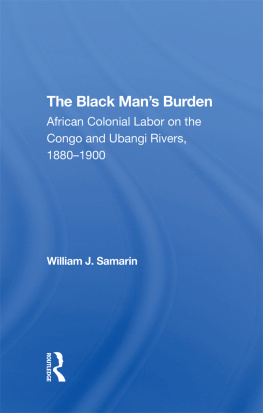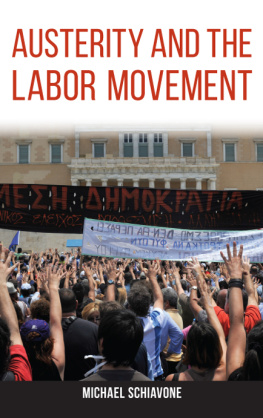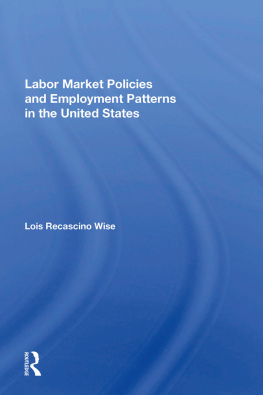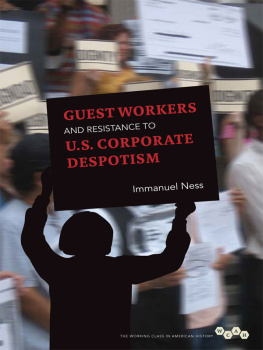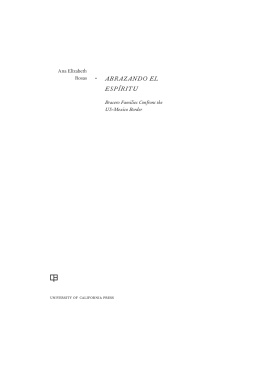First published 2006 by Paradigm Publishers
Published 2016 by Routledge
2 Park Square, Milton Park, Abingdon, Oxon, OX14 4RN
711 Third Avenue, New York, NY 10017, USA
Routledge is an imprint of the Taylor & Francis Group, an informa business
Copyright 2006 by Taylor & Francis.
All rights reserved. No part of this book may be reprinted or reproduced or utilised in any form or by any electronic, mechanical, or other means, now known or hereafter invented, including photocopying and recording, or in any information storage or retrieval system, without permission in writing from the publishers.
Notice:
Product or corporate names may be trademarks or registered trademarks, and are used only for identification and explanation without intent to infringe.
Chapters 1 and 6 are reprinted by permission of Sage Publications Ltd. from articles of the same title by Gilbert G. Gonzalez in Sage Race Relations Abstracts, Vol. 30, no. 1 (2005) and Vol. 29, no. 3 (2004) respectively.
Library of Congress Cataloging-in-Publication Data
Guest workers or colonized labor?: Mexican labor migration to the United States /
Gilbert G. Gonzalez.
p. cm.
Includes bibliographical references and index.
ISBN 1-59451-150-0 (hardcover)
1. Alien labor, MexicanUnited States. 2. MexicoForeign economic relations
United States. 3. United StatesForeign economic relationsMexico. I. Title.
HD8081.M6G6648 2005
331.62372073dc22
2005012207
Designed and Typeset in New Baskerville by Straight Creek Bookmakers.
ISBN 13: 978-1-59451-151-6 (pbk)
A S IN EACH OF MY WORKS I owe special thanks for the assistance and support of a number of people. This book emanated from a previous work that I authored with Raul Fernandez, in which we developed a theoretical approach to explaining Mexican migrationan approach that is applied in this work. However, my interest in the topic, brace-ros, I owe to Henry Anderson, whose invaluable works on the bracero program, including The Bracero Program in California, spurred me to investigate braceros as a variation of Mexican migration. Henry graciously supplied important papers, documents, and other materials from his personal archive that I included where appropriate in this study.
Alicia Anaya worked as my undergraduate research assistant and assisted me in interviewing braceros in northern California as well as transcribing the interviews. A grandchild of a bracero and a one-time migrant laborer herself, Ms. Anaya participated in important ways and contributed significantly over the course of this study. Academic staff support is most essential as well, and, indeed, administrative assistants Barbara Abell, Renee Martin, and Stella Ginez never failed to answer my continual requests for assistance, small or large. I owe a great deal to their commitment and skills, which made my work so much easier than would otherwise have been the case.
In addition, I want to thank the many students in my courses who expressed much interest in the topic of braceros, the guest workers of the mid-twentieth century. I have been continually surprised by the number of students and administrators at the University of CaliforniaIrvine (UCI) with a family history in which a bracero formed a part, a factor that has only increased my own interest in the bracero program.
My colleagues from the UCI Chicano Latino Studies Program and the Labor Studies Program were crucial to this study; their suggestions and comments on drafts of chapters or of articles that led to chapters were important to the development of my ideas. I am especially indebted to my colleagues Rosaura Tafoya, Lisa Garcia Bedolla, Roberto Gonzales, Rodolfo Torres, Vivian Price, and Linda Trinh Vo. I also wish to note the interest and support Ive received over the years from Anna Gonzales and Sunny Lee at the UCI Cross Cultural Center; many thanks are extended to them. Helen Chenut, Doug Haynes, Vinayak Chaturvedi, and Amelia Lyons of the UCI History Department offered their timely and important suggestions for further reading, which are integral to this book. I thank them, too, for their valuable responses to my queries.
Funding is critical to the success of research, and this work is no exception. The University of California Institute for Labor and Employment, the UCI Labor Studies Program, the Latinos in a Global Society Program, and the Office of Research and Graduate Studies all provided the financial support necessary to complete this study.
My familys constant encouragement and abiding interest in my research has made my work a much more valuable undertaking than I alone could ever have made it. I can only offer simple but sincere thanks to Frances, Antonio, Alicia, Xochitl, Ramon, Ninaz, and Aric for their abiding support.
Although I was fortunate to receive the support and assistance of a good number of people, there should be no doubt that I am ultimately responsible for the content of this work.
Gilbert G. Gonzalez


